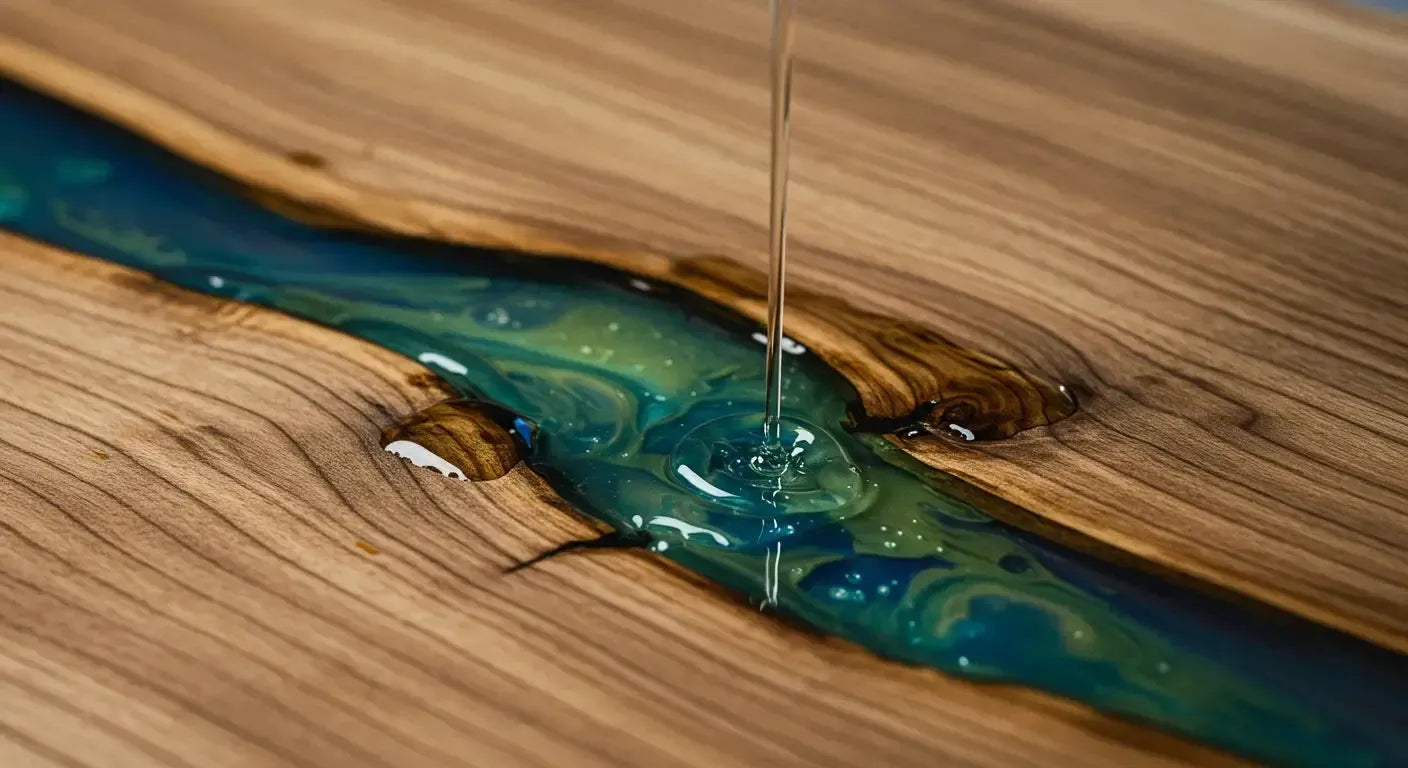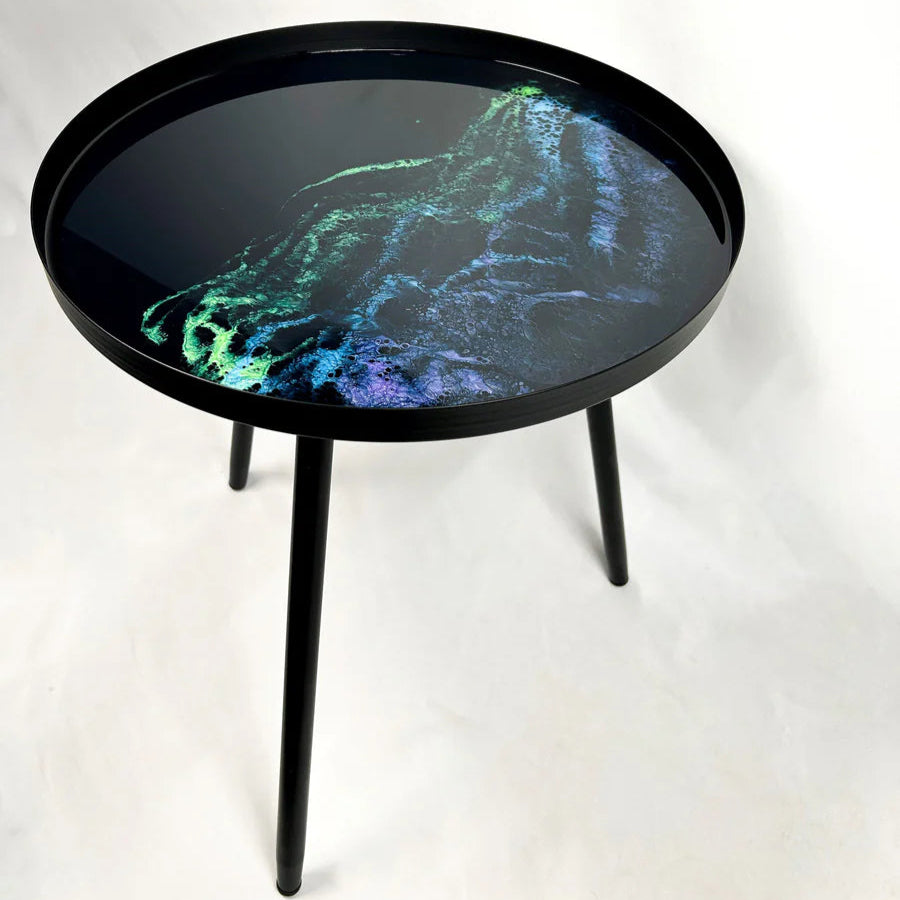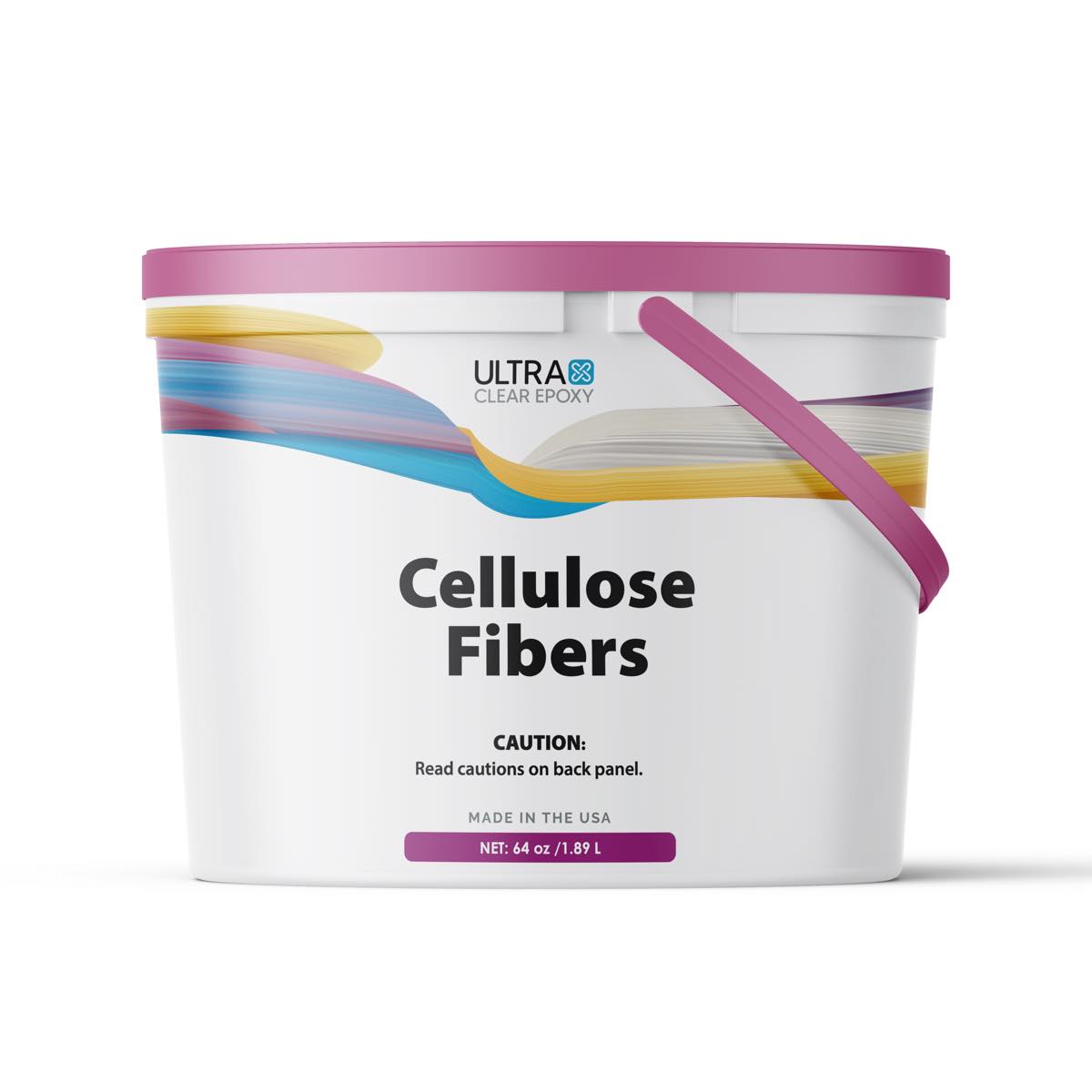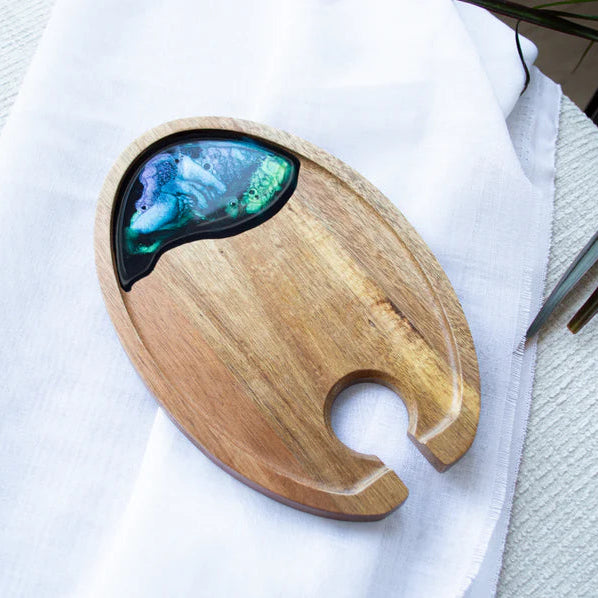Before I poured my first river table, I wasn’t even sure the resin would bond. Wood’s porous. Resin is… not. And depending on who you ask online, it either sticks forever or peels off like tape. Here’s what I learned from doing it myself—mistakes, fixes, and what worked when it actually mattered.
Why I Needed to Know This in the First Place
I had a project in mind, but wasn’t sure if wood and resin would even work together
I’d seen photos of epoxy bonded beautifully to live edge slabs—but I didn’t know what was real and what was just good lighting.
Online advice was all over the place — I needed real answers
Some people said to seal the wood. Others said leave it raw. Some said use torch heat, others said don’t. The only way to find out? Try it.

Yes, Resin Does Stick to Wood — But Only If You Prep It Right
Raw, untreated wood vs. sealed wood: big difference
Resin adhesion to wood is all about surface texture and prep. Raw wood absorbs resin fast—sometimes too fast. Sealed wood slows it down and gives you more control.
Why resin bonding can fail (and how I avoided it)
Failures came down to moisture, dust, and oil. If the surface wasn’t clean or dry, the epoxy resin adhesion on wood would fail every time.
How I Prepped the Wood to Make Sure the Resin Would Stick
Cleaning, sanding, and drying — don’t skip any step
- I sanded with 80–120 grit (not too smooth, not too rough)
- Wiped with acetone or denatured alcohol
- Let slabs dry for at least a week in the shop
Dealing with oily or exotic woods that resist resin
Woods like teak or rosewood are tricky. I’ve had better luck sealing them with a thin coat of epoxy first before the deep pour.
When I seal the wood before a deep pour (and when I don’t)
I seal almost every slab now with a thin “seal coat” of resin. It helps prevent air bubbles and bleed-through. The only time I skip it is with ultra-dry, closed-grain wood like maple.

Resin as a Wood Filler: What Worked (and What Didn’t)
Filling cracks, knots, and gaps in live edge slabs
Resin makes a killer filler—if it bonds right. I usually tape the back of the slab, then pour slowly in layers to avoid trapping air.
The mistake I made with too much heat
One time I hit a deep knot fill with too much torching too fast. The resin pulled away and cured uneven. Now I let it settle before hitting it lightly with a torch.
How I handled resin bleed-through
Unsealed wood can absorb resin and leave cloudy rings around the edges. I fixed that by sealing with a thin coat first, then sanding before the final pour.
Does All Resin Stick Equally Well to Wood?
Tabletop epoxy vs. casting resin — not the same
Tabletop resin sets fast and bonds well to surface wood—but it’s not ideal for deep cracks or fills. For thicker pours, I always use casting epoxy and give it time to flow into the grain.
How to choose the right type for your project
Flat top? Use tabletop epoxy. River table or fills? Use casting resin. Want shine? Top it with a clear coat. You can see that process in action in this post on resin types.
What happened when I tried a “bargain” brand
Peeling, lifting edges, tacky spots. I thought I’d scored a deal. I didn’t. Always go with trusted resin if you're relying on a strong epoxy bond to wood.

Common Problems I Ran Into (And Fixed)
Sticky or uncured resin
Usually means bad ratio or poor mixing. But sometimes, it’s the wood absorbing the resin unevenly. I go deeper into this in my post on common epoxy table problems.
Edges peeling or lifting
This happened on a pour where I forgot to sand the live edge first. Rough it up a little—resin needs grip.
Resin separating from oily spots in the wood
On a monkeypod slab, the center poured beautifully but the edges peeled. Now I always wipe oily wood with acetone and seal it before pouring.
What Surfaces Resin Won’t Stick To — And Why That Matters
Materials to use for molds or barriers
If you don’t want resin to bond to your mold, use melamine, silicone, or anything covered in sheathing tape. This also helps when you're building forms like I do in this river table mold guide.
Tapes and release agents that saved my projects
Tyvek tape, clear packing tape, and Ease Release 200 spray all helped me contain resin while keeping it from sticking where it shouldn’t.

FAQs I Had Before I Started Pouring
Do I need to seal wood before pouring epoxy?
Not always, but it helps with bonding and prevents air bubbles. For live edge or cracked wood? Always yes.
Can resin go on top of stained or finished wood?
Yes—but test first. Some finishes reject resin or cause bonding issues. Sand lightly before pouring to give the resin a chance to grab.
What helps resin bond better to live edge pieces?
A light sanding, wipe with alcohol, and sealing coat. Then pour slowly and let the resin soak in before filling deeper.
My Final Thoughts on Resin and Wood
Why I trust the resin-wood combo now
After dozens of pours and plenty of trial and error, I know now that resin can bond beautifully to wood—it just needs the right prep.
What I’d do differently if I were starting over
I’d skip the cheap resin, stop trying to rush the prep, and trust that sealing the slab saves me every time.
Resin really can work with wood — if you respect the process
It’s not magic. It’s chemistry. And if you set it up right, it holds up better than anything else I’ve built.
Thanks for taking the time to read—I really appreciate it. I hope something in my process (or my mistakes) helps you along the way. If you want a custom piece or hit a wall building your own, feel free to drop a comment or reach out—happy to help. Have a blessed day!







Share:
2 comments
For Charlie, yes, I would use the epoxy to fill the cracks. I have a 1970 Eggharbor 37 foot wood boat, and an doing epoxy repair on oak and mahogany and pine. The epoxy soaks well into all the dry wood on my boat. I am using a thin pourable epoxy from Walmart. Omewoold Epoxy Resin, 1 Gallon Crystal Clear Epoxy Resin Kit. I also am using milled Fiberglass fibers to bulk up for some fills.
Hi thanks for this fantastic advice. Im using 100 year old, fir. Its very dry and planned well. Just gluing the slabs together. What Im unsure of is the cracks. Should I fill with epoxy resin then finish with my satin varathane and what order? Any recommendations Im open. Cheers Charlie